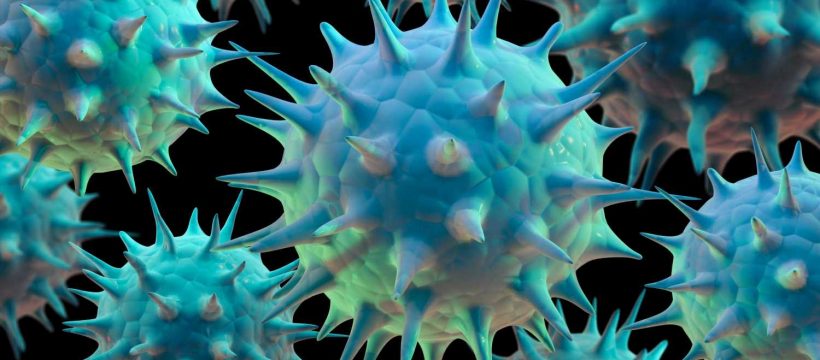TWO new Covid substrains have began circulating in the UK.
The new threats, named BQ.1 and XBB, are descendants of Omicron – the dominant strain currently making its way around the country.
Both are evolved versions of Omicron and have mutated, which make them behave slightly differently.
Omicron, the Covid variant which sent the UK into another national lockdown in November 2021, is considered to be more transmissible but less deadly than its predecessors alpha, beta and delta.
Little is known of the severity of BQ.1 and XBB but experts believe both are better at dodging immunity than their parent virus, Omicron.
BQ.1
Read more on covid
All you need to know about the two new Covid substrains
Covid cases fall for the first time since summer as 1.9m now have the bug
So far, 717 cases of the BQ.1 have been identified in the UK, according to the UK Health Security Agency.
BQ.1 is a highly transmissible off-shoot of the Omicron subvariant BA.5, according to the WHO.
It's proven to be fast spreading and has so far been detected in 65 countries, including the US.
Public Health agency, the European Centre for Disease Prevention and Control have said its rapid spread is driven by its ability to bypass immunity – created by previous strains and vaccines.
Most read in Health

Interactive map reveals the 22 Covid hotspots – is your area one of them?

My husband said I looked like a Minion – then my worst fears came true

Covid patient finally cleared of virus after 411 days of testing positive

Warning as soaring number of kids hospitalised with killer virus – 5 signs to know
The UKHSA said there is a potential for it and mutations like it to cause a “further increase in transmission” of the virus in the near future.
However, it's worth bearing in mind there’s no evidence that BQ.1 is associated with more severe illness than BA.4 and BA.5.
XBB
XBB – a combination of the Omicron substrains BA.2.75 and BA.2 – was first reported in India in August.
Since then, it has been dubbed a 'nightmare' variant, after it rapidly doubled the number of new infections in a matter of days in some of the 35 countries where it has been detected.
This gives us a bit of understanding on just how transmissible this substrain is.
Only 18 cases of the XBB have been detected on British soil, the UK Health Security Agency (UKSHA) said last week.
Medics have previously warned of the potential severity of XBB.
Amesh Adalja, a public-health expert at the Johns Hopkins Center for Health Security, said: "It is likely the most immune-evasive [subvariant] and poses problems for current monoclonal antibody-based treatments and prevention strategy.
"Even with immune-evasive variants, vaccine protection against what matters most – severe disease – remains intact."
LATEST WAVE DROPS OFF
Covid cases have fallen for the first time since the summer as the autumn virus wave fades.
The number of people testing positive fell by 150,000 to 1.9million – a seven per cent decline.
It was the first fall in infections since the end of August and shows the latest surge peaked at just half the size of the previous wave.
NHS England figures also reveal the number of people in hospital beds with the bug has fallen to 7,296 – down by a third in three weeks.
Cases first began to peak in early October.
The most recent data from the ZOE Symptom Tracker app states there are 20 symptoms Brits should be on the lookout for.
This data refers to all Brits who have logged their symptoms on the app, regardless of how many jabs they have had.
The full list of symptoms looks like this:
Read More on The Sun
Towie star single again as she splits from celeb boyfriend after ‘endless rows’
I love a juicy pout… I went from 0ml to a whopping 13ml over the years
- Sore throat – 63.55 per cent
- Runny nose – 53.04 per cent
- Headache – 53.02 per cent
- Blocked nose – 52.47 per cent
- Cough no phlegm – 52.06 per cent
- Sneezing – 47.02 per cent
- Cough with phlegm – 45.79 per cent
- Hoarse voice – 43.86 per cent
- Muscle pain aches – 29.46 per cent
- Fatigue – 22.97 per cent
- Dizzy light headed – 21.11 per cent
- Altered smell – 19.82 per cent
- Swollen neck glands – 17.72 per cent
- Eye soreness – 16.41 per cent
- Chest pain tightness – 16.26 per cent
- Shortness of breath – 15.9 per cent
- Loss of smell – 14.45 per cent
- Earache – 13.96 per cent
- Chills or shivers – 12.98 per cent
- Joint pain shoulders – 11.08 per cent
Check out The Sun's interactive Covid hotspots map to see how your your area is affected by the bug.
Source: Read Full Article





